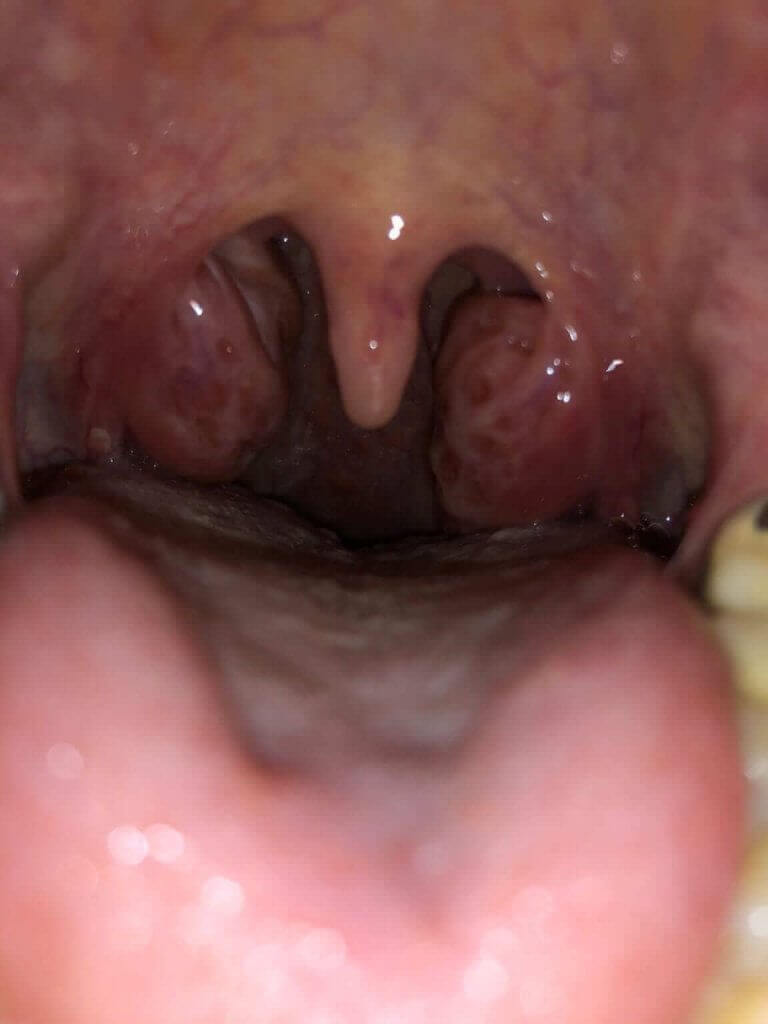
Tonsil reduction or resection in children
I would like to start with a small request: please do not get confused by this topic like everybody else.
There is a hot topic in pediatrics called the “third tonsil,” or adenoid/polyp. At the end of this topic, there is often a recommendation for adenoid reduction or resection surgery. Find out more about this in the link here.
There is also a similar hot topic in pediatrics about the two tonsils, which may also lead to a recommendation for tonsil reduction or resection (tonsillectomy). These two conditions are very similar—but not the same. So, this chapter will start by explaining what is similar and what is different about these two topics. Eventually, however, the focus will be mainly on the two tonsils located in the throat, not the third tonsil found at the back of the nose. The following post was written by Dr. Roy Hod, a senior otorhinolaryngologist who is on the list of recommended physicians on this website, in the link here.
Where can we find our tonsils and our third tonsil?
The first two tonsils that we will focus on in this chapter are the two symmetrical bumps that can be seen when a child opens their mouth (see the image attached).
The third tonsil is made of similar tissue and is located at the back of the nose.
So, the two tonsils—as you will see below—can obstruct the airway when breathing through the mouth.
The third tonsil, among other things, can obstruct the airway when breathing through the nose.
Therefore, some of the signs and symptoms of these two conditions are very similar, which can make it confusing.
From this point on in the chapter, we will focus on the two tonsils found in the mouth.
What are the tonsils and what is their role?
The tonsils are a collection of lymphatic tissue, which can also be found in other parts of the body.
The role of the tonsils, just like other lymphatic tissue, is to help protect the body against pathogens.
They are more active in children, who are exposed to more pathogens during their early years.
On the other hand—and this is important, so I’ll say it now—despite the fact that this tissue plays an important role in immune defense, reducing or removing the tonsils does not cause any immunological problems.
What types of problems can the tonsils in the mouth cause?
Generally speaking, their enlargement—up to the point where they are almost “kissing”—can lead to airway obstruction, with or without a similar enlargement of the third tonsil, which can block the nose in a similar way.
The breathing difficulties manifest as snoring, sleeping with an open mouth, apneas, excessive movement during sleep, multiple overnight awakenings, teeth grinding, attention deficit disorders (read about this in the link here), failure to thrive, and bedwetting (read more about this here).
How can tonsillar enlargement be diagnosed?
We start with a simple examination of the oral cavity to determine whether or not the tonsils are enlarged. Are they obstructing the airway, and if so, to what extent?
In addition, the physician will ask the parents questions about symptoms related to sleep apneas, as mentioned above, as well as about sleepiness during the day, lack of attention, or lack of appetite.
Is there a need for further tests when it comes to tonsillar enlargement?
Usually, there is no need for further investigation. Unlike the third tonsil, which is not visible to the eye and must be demonstrated using an optic fiber or X-ray, the tonsils in question are visible to the naked eye.
That is why imaging techniques are generally unnecessary.
What about sleep studies? A thorough history taken by the physician, combined with detailed responses from the parents, can typically assess the severity of the sleep disorder. In most cases, there is no need for additional sleep studies.
Keep in mind that a video recording of a child with a sleep disorder sleeping is often more helpful than a thousand words. Therefore, bring a 2-minute video to the consultation, taken at least one hour after the child has fallen asleep.
What are the reasons that would make you consider a tonsil reduction or resection?
We are all aware that in the past, this surgery was much more common—seemingly without strong medical justification.
Of course, there are many indications for it, but two main reasons are especially relevant in children and adolescents:
Recurrent infections – This is not very common, but sometimes in pediatrics—and more so in adolescents—there are recurrent infections in the tonsils that become borderline chronic. In these cases, throat infection symptoms return as soon as antibiotics are stopped. Most of these infections are not caused by streptococcus (learn more about strep throat here), but are instead chronic infections caused by other bacteria found in the oral cavity.
In these situations, resection of the tonsils, or tonsillectomy, is the solution.
Airway obstruction – If enlarged tonsils cause a significant and prolonged airway obstruction, and if parents describe symptoms that are likely related to obstructed breathing or sleep apnea, then a tonsil reduction or resection should be considered.
Tonsil resection or tonsil reduction?
In the past, full resection of the tonsils was standard.
Nonetheless, nowadays, there is a tendency to perform surgery for reduction only.
The advantage of performing a reduction (partial resection) is the lower risk of bleeding following surgery and less pain in most cases.
On the other hand, reduction also has its disadvantages, including foul odor from the mouth for a few days and a low risk (less than 10%) that the tonsillar tissue will grow back.
Does the third tonsil also have to be resected during surgical resection of the two tonsils?
Most of the time, the third tonsil will also be resected and removed during the surgical resection of the two tonsils in children.
What does the child need to do to prepare for tonsillectomy and why?
Prior to this surgery, we must obtain a complete blood count and coagulation tests. Why? You will find out more below, but the main reason is because one of the rare complications of this surgery is bleeding. That is why the surgeon needs to confirm that the child’s hemoglobin is within normal limits and that they do not have any coagulation disorders that may put them at risk for bleeding during or following the surgery.
Bear in mind, my friends – since the complete blood count (first test tube) and coagulation function tests (second test tube) must be obtained by poking a vein and cannot be obtained through a simple poke in the finger, I suggest making use of the opportunity to obtain slightly more extensive bloodwork for your child, as needed for all healthy children every once in a while.
If you’re going to poke the child anyway, you may as well obtain a biochemistry test, and I would also consider testing for iron and Celiac’s disease (find out more about iron deficiency and Celiac’s disease in the link here).
If extensive bloodwork has been taken recently, complete only the tests that are missing for the surgery.
Specific guidelines about fasting from food and drink prior to the surgery will be more precisely provided by the surgeon.
How is the surgery performed?
Again, this is the type of question that you should ask the surgeon. But, generally speaking, there are several main concepts to this surgery:
General anesthesia – the child will not remember or feel anything.
Hospitalization – the child will have to spend one night at the hospital, for observation at the medical institution where the surgery is performed.
The surgery is performed through the mouth and there are no external incisions.
The duration of the surgery – about 30-40 minutes.
The surgical technique – reduction of the tonsils can be performed in several different ways, such as with the use of a microdebrider or coblation. In practice, neither one of the machines is preferred over the other, and the technique is chosen based on the surgeon’s personal preference and prior experience.
Recovery – the duration of recovery from tonsillectomy or reduction of tonsils can last between one week to ten days. During this time, resting at home under parental supervision is recommended.
What are the main complications of the surgery?
Complications are rare, but it is important to be familiar with them. Bleeding can occur up to two weeks following surgery, at a rate of up to 1%. Therefore, parents will be told to refer to the closest emergency room in any case of bleeding from the mouth or nose.
What are the possible side effects following surgery?
Mainly pain, and analgesics can be used (see dosing and mode of administration in the link here). Make sure to drink lots of fluids and eat soft foods, cold or lukewarm, during the 2-3 days following surgery.
Nausea or vomiting as a result of the general anesthesia – this may last for several hours following surgery before it resolves.
Foul odour – this presents several days following surgery and resolves within a short period of time.
A change in tone of voice – this can happen sometimes. This resolves within several weeks.
In summary, this is a surgery that used to be very common in the past. However, these days it is important to consult with an independent specialist, both about the need for surgery and also about the choice of the easiest technique, such as a resection instead of a reduction, if the indication is suitable.
For comments and questions, please register
